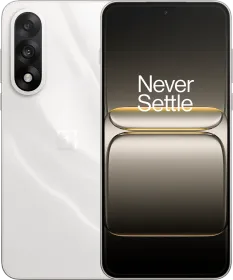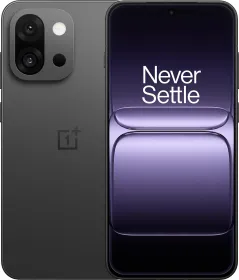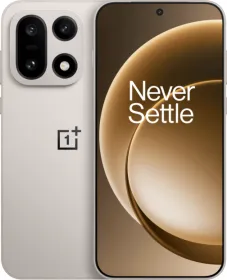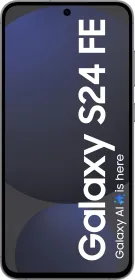The battle for your mid-tier is heating up, and the “flagship killer” arena is looking more crowded than ever. Just as we’re digesting the latest contender, Realme is throwing its hat into the ring with the GT 7. It isn’t just another smartphone; it’s Realme’s opening salvo in the 2025 high-performance, high-value race.
The mid-range smartphone segment has become a battlefield of specs and price cuts, where every brand claims to deliver “flagship performance” for less. This week has seen competition heating up in this flagship killer segment. Yesterday, we reviewed the iQOO Neo 10, and now, entering the ring is the realme GT 7. This latest GT series phone is India’s first phone to come with MediaTek’s Dimensity 9400e processor and an enormous 7,000mAh battery. The phone debuts MediaTek’s newest silicon in India and is aiming to land a killer blow to hitters like the OnePlus 13R (review), iQOO Neo 10 (review), Pixel 9a (review), and Samsung Galaxy S24 FE (review).
The real question isn’t whether the GT 7 can match its competitors on paper. With affordable flagships from Xiaomi 15 (review) to the iPhone 16e creating an increasingly crowded field, can the GT 7 prove itself as more than just another phone with a big battery and fast processor? We’ve spent time with the device based on that experience; let’s find out if it lives up to the “flagship killer” moniker or not in this realme GT 7 review.
realme GT 7 Price & Availability
The realme GT 7 starts at ₹39,999 for the 8 GB RAM + 256 GB storage variant. It’s available in two different colors— IceSense Blue
and IceSense Black. There’s also an Aston Martin Green Dream edition made in collaboration. You can purchase the device via Amazon, realme stores, and other retailers. There’s a ₹3,000 instant discount or ₹5,000 exchange bonus.
- 8GB + 256GB: ₹39,999
- 12GB + 256GB: ₹42,999
- 12GB + 512GB: ₹46,999
Pros
- Clean design
- Vibrant LTPO Display
- Excellent performance
- Reliable camera performance
- IP69 ingress protection
- Impressive battery life and charging speeds
- Stereo speaker setup
- IR Blaster
Cons
- Plasticky build
- No wireless charging
- eSIM support
Realme GT 7 Specifications
- Display: 6.78″ AMOLED, 2780 x 1264 (1.5K) resolution, 450 PPI, 120 Hz refresh rate (TM LTPO / BOE LTPO panel)
- SoC: MediaTek Dimensity 9400e (1x 3.4 GHz Cortex-X4, 3x 2.85 GHz Cortex-X4, 4x 2.0 GHz Cortex-A720, Arm Immortalis-G720 GPU @ 1.3GHz)
- RAM: 8 GB / 12 GB / 16 GB LPDDR5X @ 4266MHz
- Storage: 256 GB / 512 GB / 1 TB (UFS 4.0)
- Cameras:
- Main: 50 MP (Sony IMX906, 1/1.56″, f/1.8, OIS)
- Ultra-wide: 8 MP (OV08D10, 1/4″, f/2.2, 112°)
- Telephoto: 50 MP (S5KJN5, 1/2.8″, f/2.0, 2x Optical Zoom)
- Front: 32 MP (Sony IMX615, 1/2.74″, f/2.4, FF)
- Connectivity: 5G, Wi-Fi 7, Bluetooth 5.4, NFC
- Biometrics: Under-display optical fingerprint scanner
- Weight and Thickness: IceSense Black/Blue: 206g, 8.30mm; Aston Martin Green: 211g, 8.73mm
- Build: Glass fiber back, Plastic frame
- OS: ColorOS 15.0.1, Android 15
- Software Updates: 4 years of OS updates and 6 years of security updates
- IP Rating: IP66/IP68/IP69 water resistance
- Battery and Charging: 7000 mAh (dual cell), 120W SuperVOOC, USB Type-C
- Audio: Stereo speakers (1115W + 1012H), Hi-Res Audio, Type-C audio
realme GT 7 Review: Design and Build
realme design approach has been distinctive over the years. From Onion and brick-inspired design back in X series phones to color-changing back phones in lower temperatures in GT7 Pro, they have offered something distinctive. With their GT7 design, they have coined some new design lingos – “IceSense Graphene” design and skin-touch temperature let’s address them one by one.

They claim to have integrated layers of graphene within the glass fiber of the battery cover and back panel, which allows a significant leap in thermal conductivity – a 24x improvement over standard fiberglass and 6x better than traditional glass backs.
The realme GT7 has a dedicated 7700mm² super large single graphene VC that covers 65 percent phone’s surface area, targeting the primary heat-generating components to ensure sustained performance during demanding tasks like gaming, where heat dissipation is crucial. The benefit of this IceSense Graphic backpanel, a reduction of 6°C in the phone’s core temperature and it’s 1°C less while gaming in comparison with other phones in the segment.
What is this Skin-touch temperature that you mentioned? Well, the Realme says that due to the graphic fiber back, the phone body feels warm in winter and cool in summer. Does it feel like as advertised? Frankly hard to tell.

Coming back to basics, the Realme GT 7 looks elegant with its muted approach, offering a sleek aesthetic. The rear panel, constructed from glass fiber (0.44mm for IceSense Black and Blue, slightly thicker at 0.72mm for Aston Martin-Green), feels robust. Gorilla Glass GG7i, a welcome addition for durability, protects the display. An aluminum alloy is used for camera accents, adding a touch of premium feel.
The frame, while incorporating plastic (PC + 20% GF) in parts, also utilizes die-cast aluminum (AM03) in key structural areas, suggesting a focus on balancing weight and rigidity.
The GT 7 boasts an impressive IP66/IP68/IP69 rating, so thumbs up for that. Port placement follows logical conventions: USB-C 2.0 on the bottom alongside the primary speaker and dual nano-SIM tray, power and volume controls on the right side, and an IR blaster up top.
Overall, realme has prioritized functional improvements – better thermal management, lighter weight despite larger battery, improved water resistance – over visual flourishes.
realme GT 7 Review: Display
Beyond the intriguing graphene cooling, the Realme GT 7 also offers an impressive display. It sports a 6.78-inch AMOLED panel sourced from BOE. This 1.5K resolution display (2780 x 1254 pixels) translates to a sharp 450 pixels per inch (PPI), ensuring text appears crisp and gaming visuals are detailed.

One of the key features here is the 10-bit LTPO (Low-Temperature Polycrystalline Oxide) technology. This allows the display to dynamically adjust its refresh rate, scaling down to a power-saving 1Hz when displaying static images and ramping up to a fluid 120Hz for smooth scrolling through the user interface and during gaming sessions. Realme also provides a practical option to switch the screen resolution from the native 1.5K down to 1080p, offering users a degree of control over battery consumption.

Color reproduction on this BOE AMOLED panel is vibrant, covering 100 percent of the DCI-P3 color gamut, which promises appealing and accurate visuals for media consumption and gaming. With a typical brightness of 600 nits and a peak brightness of 1600 nits in High Brightness Mode, outdoor visibility appears to be well-addressed, putting it in the same ballpark as many flagship competitors, including the OnePlus 13. Furthermore, including Dolby Vision, HLG, and HDR10+ support right out of the box ensures a premium HDR viewing experience across compatible content. The phone also has the highest possible Google Widevine L1 DRM certification.
The display features a 360Hz touch sampling rate, which is particularly beneficial for gamers and aligns with the GT series’ philosophy of focusing on performance.
Finally, the implementation of 2160Hz PWM (Pulse Width Modulation) dimming is a significant advantage for users sensitive to screen flicker at lower brightness levels. This high-frequency dimming feature aims to reduce eye strain, a concern often associated with AMOLED technology and could give the GT 7 an edge over some competitors.
realme GT 7 Review: Haptics, Sound, and Biometrics
The Realme GT 7 also delivers a solid audio experience. The speakers are loud and clear, making them well-suited for both gaming and media consumption. At the same time, there’s a slight imbalance due to the earpiece acting as a secondary speaker. The earpiece is fine for calls, and mic quality is decent too.

Complementing the audio is the well-implemented haptic feedback. The GT 7 features an X-axis linear motor, resulting in precise and responsive vibrations. Whether you’re typing out a message, adjusting the volume, or navigating the user interface, the haptics offer a tactile and interactive feel. As far as biometrics are concerned, the GT 7 comes with an optical under-display fingerprint reader, which is both snappy and accurate.
realme GT 7 Review: Software
At its core, the Realme GT 7 runs on Android 15 but with a layer of customization labeled as Realme UI 6.0. If you’ve lived with Oppo’s ColorOS before, you’ll find this terrain largely the same, with minor cosmetic changes here and there. Importantly, Realme is promising four major Android updates and six years of security patches on the GT7.

The Realme UI 6.0 arrives with a suite of AI-powered features, a mix of improved returning features, and new experiments. One of the new additions is the AI Planner, which aims to be a smart scheduling tool that automatically pulls event details from your communications. If it works reliably, this could be a genuine time-saver.

The AI Game Coach promises in-game assistance that identifies risks and notifies you through gameplay to benefit you. In games like BGMI, the in-game status Updates feature utilizes its algorithm to provide a global perspective, offering reminders about teammate statuses, equipment durability, zone progression, and other relevant information.
For gamers, Realme also has AI Gaming Super Resolution and Super Frame features. The former claims to upscale visuals in demanding titles like Genshin Impact and Honkai: Star Rail, while the latter aims for smoother frame rates in those games, as well as Free Fire MAX, PUBG, and Honor of Kings. The real-world impact of these often feels incremental, but the intent to optimize the gaming experience is there.
Then comes the broader AI toolkit. AI Sketch-to-Image is like a digital novelty toy, attempting to turn your rudimentary drawings into various artistic styles. It’s more of a fun diversion than a serious creative tool, with a daily limit of ten generations.
AI Unblur, designed to fix blurry photos, felt inconsistent in my use. Sometimes, it worked fine; other times, it produced odd visual glitches, particularly around faces, where skin tones could take on a life of their own. It’s a “nice try” feature that needs more refinement.
The AI Eraser 2.0, now with the ability to simply tap to remove all the people from photos, is a genuinely useful upgrade and works flawlessly.
AI Ultra Clarity, which aims to enhance image quality, often veered into over-sharpening territory for my taste, giving photos an artificial, almost cartoonish look. Less is often more, and here, the AI seems a bit heavy-handed.
For text, AI Writer can generate copy in several different styles, including Artistic, Casual, and Emoji. It’s accessible in certain apps via a sidebar, offering a quick way to rephrase or create short snippets of text. Works well most of the time.
The Recorder app’s transcription and summarization of audio, including calls, with multilingual support (such as Hindi), is a genuinely practical addition. The real-time “Live Alert” during processing is a nice touch.
The AI Studio for generating AI portraits is another example of a trendy feature. You get some initial credits to play with, but the results, like most of these AI portrait generators, can range from passable to slightly unsettling.
Realme UI 6.0 on the GT 7 has clearly added more AI muscle than what we experienced with the Realme GT 7 Pro at the start of 2025. , throwing a lot at the wall to see what sticks. Some of these features feel genuinely helpful and well-integrated, while others appear more experimental. It’s a software package that’s both familiar and forward-looking, even if not every AI promise fully delivers.
realme GT 7 Review: Performance and Benchmarks
The realme GT 7’s performance depends on MediaTek’s Dimensity 9400e, which is essentially a refined version of last year’s flagship 9300+ chipset. It is fabricated using the TSMC 4nm process node, featuring one X4 performance core ticking at 3.4 GHz, three more X4 cores clocked at 2.85 GHz, and four A720 efficiency cores clocked at 2.0 GHz. For graphics, the Arm Immortalis GPU, clocked at 1.3 GHz with Ray Tracing support, is doing all the heavy lifting. MediaTek appears to have optimized for improved sustained performance and thermal efficiency.
| Benchmark | GT Mode |
| AnTuTu | 22,36,357 |
| CPU Stress Test (50-thread, 30 min) | 535,508GIPS (CPU throttled to 85%) |
| Geekbench 6 (CPU) | Single-Core: 2,264, Multi-Core: 7,457 |
| Geekbench 6 (GPU) | OpenCL: 15074, Vulkan: 15919 |
| 3DMark Wild Life Extreme | 5,944 (Avg. FPS: 35.60) |
| 3DMark Wild Life Extreme Stress Test | Best Loop: 5,209, Lowest Loop: 4,192, Stability: 80.5% |
| AnTuTu Storage Test | 207427 |
Raw benchmark scores look impressive, consistently outperforming Qualcomm’s Snapdragon 8s Gen 4 across standard synthetic tests. But benchmarks only tell part of the story – sustained real-world performance reveals the 9400e’s genuine strengths.







BGMI runs at a stable 120 FPS without the thermal throttling that troubles many gaming phones in this price segment. More impressively, Genshin Impact maintains consistent 60 FPS gameplay even in a non-air-conditioned room, which means realme has done excellent optimization, and their graphene thermal management is working in tandem.
In comparison to the iQOO Neo 10’s Snapdragon 8s Gen 4, the differences are particularly revealing. The GT 7 consistently runs cooler during both gaming sessions and everyday tasks, indicating superior power efficiency rather than just better heat dissipation.
The thermal advantage becomes most apparent during sustained workloads. Where the 8s Gen 4 begins throttling after 15-20 minutes of intensive gaming, the 9400e maintains consistent frame rates for longer sessions.
This efficiency profile suggests MediaTek has focused on optimizing the 9400e for real-world usage patterns rather than chasing peak benchmark scores. It’s a mature approach that prioritizes consistent performance over fleeting moments of excellence.
Overall, the Realme GT7 delivers exactly what users need. It has reliable gaming performance and excellent thermal characteristics.
realme GT 7 Review: Cameras
The realme GT 7 features a triple camera setup on the back and a front-facing selfie shooter. Interestingly, they have downgraded the main sensor from the GT 6’s LYT808 (1/1.4-inch) to the smaller IMX906 (1/1.56-inch).
The camera app offers two distinct color profiles: Crisp, for natural tones with enhanced sharpness, and Vibrant, for boosted saturation. The shutter response feels genuinely fast – a key feature for capturing spontaneous moments.


The image taken from the primary camera clearly suggests it is among the better ones in this price segment, with natural color reproduction but slightly boosted contrast. The camera locks focus quickly using PDAF, and it utilizes optical image stabilization to ensure stable shots. The HDR processing works effectively without the over-processed look that plagues many mid-range phones.


Thanks to its f/1.8 aperture, the camera managed to capture decent low-light capability despite its smaller sensor size. Night mode extends exposures up to 3 seconds, producing usable results, though excessive sharpening becomes apparent in low-light scenarios.


Clearly, on paper, it might sound like a step backward, but realme has managed to extract surprisingly good performance from the given hardware, serving us a gentle reminder that sensor size isn’t everything in smartphone photography.


The 50MP telephoto camera, which utilizes Samsung’s JN5 sensor, lacks optical image stabilization (OIS) but delivers surprisingly competent 2x optical zoom results in good lighting conditions.
Even 5x digital zoom maintains acceptable detail without the over-sharpening that typically makes zoomed images unusable on budget phones.
Low-light telephoto performance predictably degrades beyond 2x, with the phone intelligently switching to main camera crops in challenging conditions.


The ultra-wide camera represents the typical mid-range compromise – an 8MP sensor that handles daylight adequately but struggles significantly in low light.
portrait mode


Portrait mode performance across all cameras shows decent edge detection but struggles with skin tone accuracy, particularly for darker complexions – a common weakness in mid-range computational photography that software updates could potentially address.
The camera does surprisingly good work, especially in 2x shots. The background blur looks natural, and more often than not, it delivers clean bokeh without clipping hairs or body parts.
Videos
The GT 7’s standout feature is 4 K 120fps video recording – genuinely unusual in this price segment. Both standard speed and slow-motion modes produce quality results with effective stabilization and accurate colors. Portrait video at 1080p30 is supported across the main, telephoto, and selfie cameras, although the results remain fairly standard.
Special shooting modes include practical additions like Street photography mode (16-446mm equivalent range), Starry mode for astrophotography, and even an Underwater mode that leverages the IP69 water resistance rating.
Selfie
The 32MP selfie camera, featuring a 1/2.74-inch sensor, produces solid results with dual focal length options (21mm and 24mm equivalent). Image quality remains strong in good lighting, though low-light performance suffers predictably.
realme GT 7 Review: Battery and Charging
The realme GT 7’s most compelling feature isn’t its processor or cameras – it’s the massive 7,000mAh battery. Realme utilizes dual BLPC47 silicon carbon batteries, which, according to the company, together deliver 7 hours of continuous BGMI gameplay at 120fps with a substantial amount of battery remaining.
Our testing suggests these claims aren’t far off. We are getting around 8-12 hours of screen-on time, depending on usage on a particular day. You can even get 8-10 hours of screen-on time with heavy BGMI gaming most days.
The combination of the 9400e processor, silicon-carbon batteries, and realme’s power management creates minimal idle drain, ensuring you achieve these impressive numbers.
The 120W SuperVOOC charging system is a timesaver and could prove a lifesaver in a crisis when your phone battery dies. We managed to go from 0 to 56% in 15 minutes and fully charge this 7000mAh battery in 38 minutes. Apart from 120W SuperVOOC, realme has given support for 44W UFCS, 55W PPS, and 11.7W PD/QC compatibility, which is worth applauding.
Review Verdict: Should You Buy the realme GT7?
The Realme GT 7 isn’t chasing every spec under the sun; instead, it focuses on things that matter in everyday life. It alleviates your battery anxiety thanks to a combination of a large battery and a well-optimized system. The display is solid, and the cameras punch right in most scenarios. And yes, it can handle hours of high-refresh-rate gaming in titles like BGMI without breaking a sweat.
Compared to the OnePlus 13R, Pixel 9a, and Samsung Galaxy A56, the Realme GT 7 often feels a step ahead in day-to-day responsiveness, especially when considering the price. The iQOO 13 presents a tougher choice for hardcore gamers, a true head-to-head. While a Pixel 9a’s processing might appeal to some, shutter lag takes the fun out. The Samsung Galaxy A56 offers long-term software peace of mind, but the GT 7 offers a much smoother overall experience, exceptional battery life, and blisteringly fast charging. So, if you’re looking for a capable all-rounder that doesn’t break the bank (around ₹40,000), the Realme GT 7 deserves a serious look.

Smartprix ⭐ Rating: 8.2/10
- Design and Build: 7.5/10
- Display: 8.6/10
- Speakers: 7.7/10
- Software: 7.8/10
- Haptics: 8/10
- Biometrics: 8/10
- Performance: 9/10
- Cameras: 7.5/10
- Battery Life & Charging: 9/10
First reviewed in May 2025.





































Hope camera optimization flagship ke level pe ho, warna specs hi reh jaate hain kaafi phones mein.